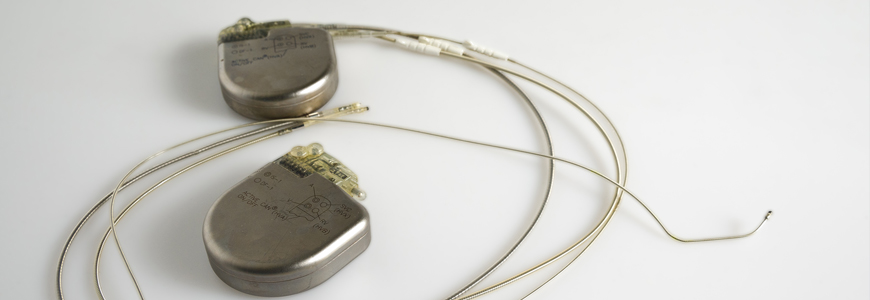As the use of mobile devices expands rapidly in health care settings, a team of Duke heart failure (HF) specialists project increasing opportunities for additional technology applications for the growing numbers of patients with the condition.
Wearable devices adapted for patients with HF have the potential to expand data collection outside conventional clinical encounters, says Adam D. DeVore, MD, MHS, an advanced HF and transplant specialist. DeVore was the lead author of a study published in November in the Journal of the American College of Cardiology: Heart Failure. Adrian F. Hernandez, MD, MHS, an HF specialist, and Duke Clinical Research Institute fellow Jedrek Wosik, MD also contributed.
“There are many therapeutic options for patients with HF including new medications, but they are not being utilized effectively enough and are not getting to the patients,” DeVore says. “In some cases, these problems are patient-related. Some of the hurdles are financial, and some are related to health system decisions. That’s the gap we believe can be at least partially addressed with technology including wearables and new mobile devices.”
Most current data are limited to observational studies and small, randomized trials, DeVore notes. But he projects that future clinical trials will incorporate more wearables.
The authors, who focus on potential HF therapies in their research, predict much greater potential for wearables to help patients, but they emphasize the need to document the devices’ empirical value within the HF community by taking the following steps:
- Generate data supporting efficacy in real-world HF populations.
- Adopt payment models that incentivize high-quality, longitudinal HF care, and allow for infrastructure investments to get the most value from mobile data.
- Promote collaboration among health systems, professional societies, and patient organizations to develop systems and social change that promote the most effective use of new technologies to enhance HF care.
DeVore is an advocate for further study into the effects of wearables on patient outcomes. “This is one focus of our research,” DeVore says. “The prevalence of HF is growing because of two factors. First, we have an aging population. The second factor is positive and is related to successful cardiac care. More patients survive a heart attack or undergo successful valve replacement surgery and do very well.”
However, those patients often experience future challenges because their heart function is abnormal. “Eventually, this may develop into HF and, unfortunately, we still have poor outcomes among patients with HF.”
Approximately 6 million patients live with HF in the United States, DeVore says. About 50% of patients die within five years, according to the most recent data. Long-term solutions are not encouraging he says. Only about 3,000 transplants are performed each year while approximately 2,500 patients receive left ventricle assist devices (LVADs).
“Obviously, there’s a huge gap between patients with HF who need long-term solutions and those who can get it,” DeVore says.
